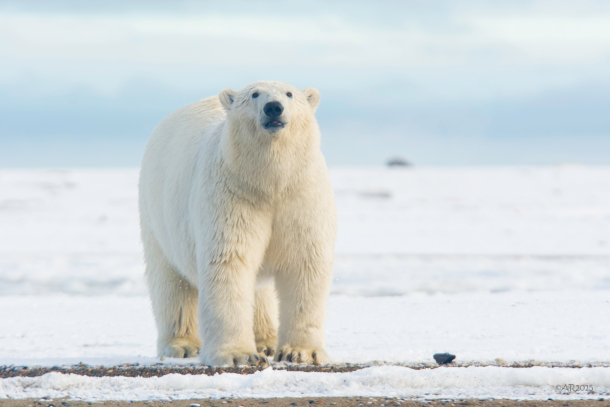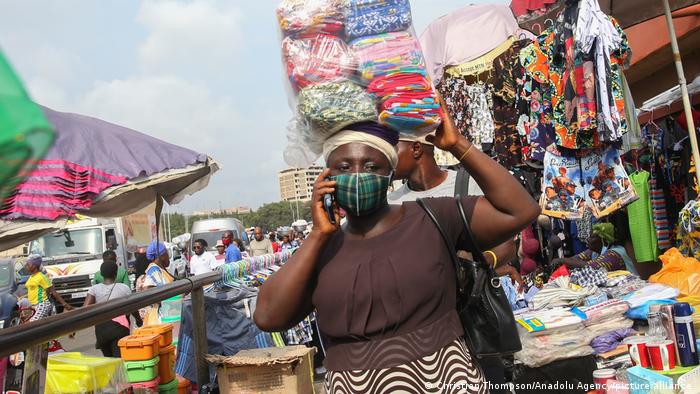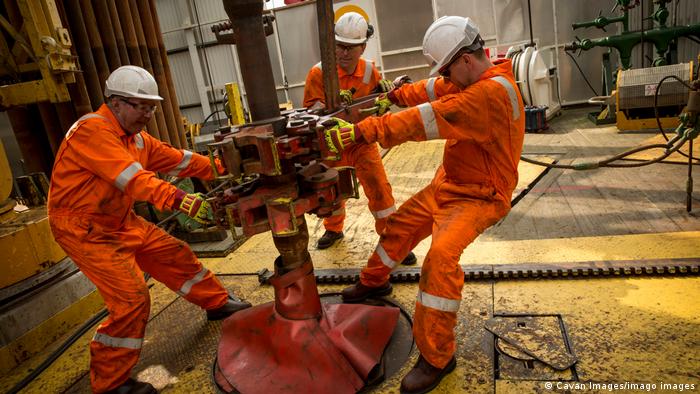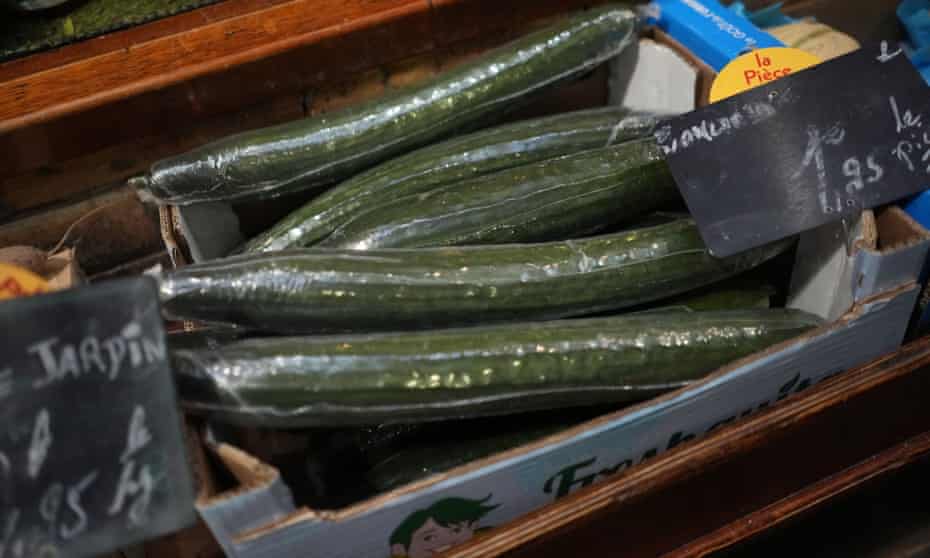This is hardly the time to talk about plastics is what I think when Dad, hovering over the waste bin at a post-funeral potluck, waves me over, his gesture discrete but emphatic. He has retrieved from the trash a crystalline plastic cup, with fluted, rigid sides. “Polystyrene,” he grins, inverting the cup to reveal its resin code (a 6 stamped inside the recycling symbol). “But not my kind.”Dad, back in the 1960s, had manufactured a more resilient variety of polystyrene for Union Carbide, one of the 20th century’s major plastics manufacturers, since acquired by Dow Chemical Company. Now, in the parish hall, I recognize he is seconds from crushing the cup. As if on cue, he closes his grip. Being a certain type of polystyrene—and this is his point—the cup splinters into a strange bloom of shards arrayed about the cup’s circular bottom.No butadiene, I think. “No butadiene,” he says, which, on the production lines he ran, had been added to rubberize the resin, one among 10,000 helpmates that make plastics as we know them possible. Dad shuffles off to find the recycling bin, though he knows the cup has little chance for recovery and likely a long afterlife ahead. This is especially true for polystyrenes, of which there are multiple varieties; plastics, as the anthropologist Tridibesh Dey notes, are a chemically complex lot, designed for performance rather than reclamation.Dad once believed that plastics could be reused indefinitely. I imagine that, maybe, he thought plastics, like their makers, deserved the chance to begin again. When Union Carbide downsized in the 1970s, Dad took severance and stayed home with my siblings until he could figure out what a life beyond plastics might look like. The answer, it turned out, was public administration: For a time, he ran my hometown’s recycling program. Recycling, though, never lived up to Dad’s ideal. Of all the plastics made over his lifetime, less than 10 percent has been effectively repurposed.This failure, like so many other aspects of our relationship with plastics, is often framed in terms of individual shortcomings; plastics’ producers, or the geopolitics that have made plastics so widespread, are rarely called out. But to read plastics’ history is to discover another story: Demand for plastic has been as manufactured as plastics themselves. Society is awash in throwaway plastics not because of the logic of desire but because of the logic of history and of integrated industrial systems.For decades, the industry has created the illusion that its problems are well under control, all while intensifying production and promotion. More plastics have been made over the past two decades than during the second half of the 20th century. Today, recycling is a flailing, failing system—and yet it is still touted as plastics’ panacea. No end-of-the-pipe fix can manage mass plastics’ volume, complex toxicity, or legacy of pollution, and the industry’s long-standing infractions against human health and rights.All of this has been true for years, but if there is a time to talk about plastics, now might be it. Plastics are poised to dominate the 21st century as one of the yet-unchecked drivers of climate change.When Dad’s former employer started making plastics in the late 1920s, no market was itching to buy them. But the company, in a sense, had to make plastics.Its new commercial antifreeze, Prestone, was synthesized from natural gas and created a by-product, ethylene dichloride, a chemical that had no practical purpose and so was stockpiled on-site. Quickly, it amassed in unmanageable, “embarrassing” quantities, as one Carbide newsletter later put it. Its best use, the company decided, was in making vinyl chloride monomer, recognized as a carcinogen since the ’70s, but back then a building block for a rascally class of plastics no one had commercialized yet—vinyls.This isn’t an isolated example, but rather an illustration of how product development often unfolds for chemicals and plastics. For Carbide and other 20th-century petrochemical firms, each product required a series of multistep reactions, and each step yielded offshoots. Develop these, and the product lines further branch, eventually creating a practically fractal cascade of interrelated products. Everything that enters the system, explains Ken Geiser, an industrial-chemicals-policy scholar, in his book Materials Matter, must eventually go somewhere; matter being matter, it is neither created nor destroyed. And so it must be converted: made into fuel, discarded as pollution, or monetized. After many iterations, Carbide arrived at Vinylite, finally made workable by blending two types of vinyls: polyvinyl chloride (PVC) and polyvinyl acetate.According to an internal marketing report, Carbide spent years trying to “synthesize” new customers and invent new uses for Vinylite, while a credit department eased the financial burden of adopting it. The company even sent technical teams around the country to teach manufacturers how to use the resin, all with limited success. Celluloid, before Bakelite, and polystyrene afterward, had similar troubles gaining purchase.Then World War II erupted. War contracts expedited the development of emerging resins. For example, the U.S. Navy helped DuPont and Union Carbide secure a license from Britain’s Imperial Chemical Industries to begin manufacturing polyethylene for insulating wire and cable (enabling radar). The Manhattan Project spurred DuPont to industrialize its new fluorinated plastic, what would become Teflon, previously produced in batches measured by the gram rather than the ton. The war also matured existing resins: 32 times more polystyrene was being produced at the war’s end than at its outset.But polystyrene also shared base ingredients with another material crucial to modern, mechanized warfare—styrene-butadiene rubber, or SBR. Rubber made up tank treads. Bomber tires. The soles of the boots that soldiers wore.Left: A sound radar used to detect approaching aircraft, 1949. (Hulton-Deutsch Collection / Corbis / Getty) Right: A worker in the Chrysler Dodge truck plant during World War II, near Detroit, August 1942. (Corbis / Getty)Germany’s colossal IG Farben had already been synthesizing Buna S rubber, its coal-derived version of SBR, when disruption of the natural-rubber trade forced the U.S. to catch up. One American alternative, GR-S, or Government Rubber-Styrene, was developed in a crash course of research and development, wrote the historian Peter J. T. Morris, that rivaled the race for the atom bomb. To keep pace with wartime rubber demand, styrene was produced at levels that seemed “almost unbelievable,” reads a Dow advertisement from the 1940s, especially considering how hard it had been to make previously.Styrene, too, came with risks. Like vinyl chloride monomer, it has the potential to cause cancer. The same was true with synthetic rubber’s other main ingredient: butadiene, yet another monomer later found to be carcinogenic, and a chemical emblematic of how once-discrete industries—petroleum and chemicals—fused into the petrochemical sector.The U.S. found itself caught between two ways of making butadiene. One involved making the chemical from grain alcohol, the other from petroleum. Oil interests vied with the farm bloc over government contracts to feed the new rubber machine. Grain held its own during the war, but afterward, the federally backed petroleum boom routed any possibility of a carbohydrate-dominated chemical-and-plastics industry. Grain harvests were deemed too irregular, too beholden to the seasons, to floods and droughts, and thus to price fluctuations.By the 1950s, the government had sold its wartime rubber factories to private interests. Styrene, as Dow advertised, received its “honorable discharge” so it could “serve a world at peace.” Multiple firms, including Union Carbide, could now make styrene and butadiene in quantities that exceeded what a peacetime rubber industry could consume. The outlet for excess styrene: more polystyrene, some portion of which would later be modified into high-impact grades. Dad’s kind of polystyrene.Photograph by Matthew Porter for The AtlanticPlastics’ postwar “domestication occurred unevenly, by fits and starts,” the cultural historian Jeffrey Meikle writes in his book American Plastic. To whip up demand, the industry as a whole invested heavily in advertising, in fact becoming one of advertising’s biggest clients. At first, it set its sights on women, to teach them plastics’ advantages and how to pronounce what the Society of the Plastics Industry (SPI) admits were their “jaw-breaker” names. (“Polly and Vinny Who?” reads one 1953 pamphlet the SPI co-published with the women’s magazine McCall’s. Why it’s: “Vine-ills and Polly-sty-rene.”) When the industry couldn’t invent new markets with, for example, the Tupperware party, it pushed into established ones by underbidding leather, cotton, glass, and metals. Still, sales were such that, by the mid-1950s, as the plastics scholar Max Liboiron has explained, the industry looked for growth by moving plastics not into homes but through them. The rosy future of plastics was in disposables—or as Modern Packaging Magazine’s editor, Lloyd Stouffer, put it, “in the trash can”—and polystyrene was one of the go-to resins.Soon Scott placed a series of ads in Life magazine featuring what the company called the first throwaway “‘glass’ nice enough for entertaining.” The cup, made from “pure porcelain-smooth polystyrene” was, the copy promised, “absolutely, positively, guaranteed disposable.” By the 1960s, the era my dad made plastics, the military was buying polystyrene again, this time to manufacture the incendiary napalm-B, but packaging and single-use applications were becoming plastics’ largest markets. Production rates were headed “up and up with a vengeance,” wrote an analyst whose sentiments were entered into the 1971 congressional record. At the grocery store, plastics picked off paper item by item: the egg carton, the bread bag, the meat tray, and, eventually though not easily, the grocery sack, says the science writer Susan Freinkel in her book Plastic: A Toxic Love Story.“Consumers,” Meikle explains, “could choose only from among goods presented in the marketplace.” And by the closing decades of the 20th century, what was on offer was plastic.In my office, polystyrene cups of many shapes, sizes, grades, and hues line my bookshelf. All were gifts from Dad, who has the admittedly obscure habit of bringing them over. To toss them feels unbearable, and recycling, uncertain.It can be hard to visualize the web that connects commonplace cups to the interlocking global crises of toxics, environmental injustice, and climate change, and even harder to locate where to intervene. True, some plastics make goods and vehicles more lightweight and thereby efficient. And plastic components help make up technologies that capture and distribute renewable energy. But by comparison, more than 40 percent of plastics now goes into containers, cups, packaging, and other short-term-use products. Despite encouragements to refuse disposables when possible and to #bringyourown, most people in most cases have little say over the volume of plastic packaging in their lives. In some places, a sizable proportion of discardable plastics (for example, sachets) has become largely unavoidable, especially in rural and remote regions where alternatives can be either inaccessible or unaffordable.From Life magazine, 1955. A family tossing paper cups, plates, aluminum-foil pans, lunch trays, straws, and napkins through the air, illustrating how society has turned into a disposable society with throwaway products. (Peter Stackpole / The Life Picture Collection / Shutterstock)Moreover, plastics’ ubiquity isn’t always that visible. Google can lining and drain cleaner and watch for yourself how, once a soda or beer can is submerged in drain cleaner, the cleaner digests the metal layer, leaving a clear, plastic sleeve behind. Or better yet: Soak your next takeout paper coffee cup in a bowl of water. The paper will slough off, revealing the thin layer of polyethylene within.By the early 1970s, 15 states were already considering how to limit the rapid proliferation of plastic containers. The industry shifted from promotion to self-defense. Industry groups stymied New York City’s attempt at a two-cent bottle tax, and in the following decade beat back restrictions in nearby Suffolk County on polystyrene cups and other tossable plastics. Industry trade groups have even lobbied for states to preempt bans on plastic bags. And whenever public-opinion polls suggested slippage, or if the threat of public regulations loomed, industry and its trade associations upped their ad buys.At no other juncture in its history, though, has plastics faced the scrutiny it does now. This past March, two Democratic members of Congress introduced legislation to address plastic pollution. At least two-thirds of United Nations member states (including, recently, the United States) support negotiations toward a binding treaty to address plastics’ global implications. And this month, the National Academies of Sciences, Engineering, and Medicine called on U.S. producers to reduce the volume of plastics entering commerce and, by extension, the environment. Even my dad has been involved in a push to introduce a municipal ban on disposable polystyrene.All of these efforts call into question plastics’ unfettered production, but there’s another reason, too, to address plastics now—the industry’s carbon-intensive production is driving climate change.Plastics has been an adaptable industry, at first forming products from raw materials such as gutta-percha and wood pulp, and then from other industries’ discards, including cotton linters, agricultural waste, and the remnant gases emitted from city gas plants or steel’s coal-to-coke ovens. Plastics are now made in a highly integrated network of refineries, crackers, and petrochemical plants—complexes that have been retrofitted or relocated to better tap new or different oil and gas deposits. Today, 98 to 99 percent—that is to say, most plastics—are manufactured from fossil fuels.Historically, fossil-carbon feedstocks have been something of a distorted market, given the number and variety of government subsidies: assistance with technology transfer, tax breaks, grants, soft loans, price controls, and, as described here, wartime contracts—which has shaped plastics’ pricing and production in turn. The plastics industry hasn’t had to account for the true costs of its operations, either, including the price of what it has burned, drummed, dumped, lagooned, landfilled, injected, spilled, incinerated, sent up the stack, or drained out the outfall pipe.But the nature of petrochemicals issued its own economic imperative. Plastics had to be a high-volume product to recoup the substantial capital investments necessary to build and then operate such complex facilities, among the largest, most expensive, and most energy-intensive in the process and manufacturing sectors. Yet again, the same problem: more plastics that need more uses and more markets.The U.S. “fracking boom,” or what’s been called the “shale revolution,” has fueled plastics’ most recent expansion. Fracking has made the U.S. the world’s largest producer of oil and gas, resulting in “a glut,” Kathy Hipple, a senior research fellow at the Ohio River Valley Institute, told me. This oversupply of feedstock drove another round of investments in plastics plants, which in turn, Hipple explained, has forced an excess of plastic packaging onto the market—more than demand can absorb. These plastics, now primarily polyethylenes and polypropylenes made from natural-gas liquids, have reduced polystyrene to a minor player in the packaging and disposables market—about 2 percent. Tongue in cheek, I’ve taken to calling plastics’ latest output “frackaging.”But the economics of plastics is once again changing. As energy and transportation shift away from fossil fuels, plastics seem to many oil and gas producers like one of the few opportunities to keep growing, to keep going. Some new “mega-plants,” such as China’s Zhoushan Green Petrochemical Base, convert crude oil, rather than refinery by-products, directly into chemicals and plastics.And this is (partly) how plastics would come to produce a greater share of the world’s carbon emissions. Should U.S. plastics production continue to grow as the industry projects, by 2030, it will eclipse the climate contributions of coal-fired power plants, concludes Jim Vallette, the lead author of a new Beyond Plastics report. Or, by another measure, the current growth trajectory means that by 2050, the industry’s emissions could eat up 15 percent, and potentially more, of the global carbon budget. How much varies by feedstock and type of plastic, but on average, 1.89 metric tons of carbon-dioxide equivalents (a composite measure of greenhouse gases) is produced for every metric ton of plastic made.Emissions stem from upstream fossil-fuel production and processing. But there are concerns, too, about the potential for even more emissions at the other end of the life cycle, should states green-light industry proposals to expand such carbon-intensive waste-management technologies as incineration, refuse-derived fuels, and molecular, chemical, and so-called advanced recycling. These unproven technologies use high heat and other methods to convert waste into feedstocks for making more plastics. As of now, such technologies shift “the landfill from the ground to the sky,” says Yobel Novian Putra, who works on Asia Pacific climate and energy policy for the Global Alliance for Incinerator Alternatives, which in turn has implications for both air quality and climate.But petrochemical production itself is also energy-intensive—among the top-two energy users in the manufacturing sector. Even if the industry were to convert to low-carbon energy sources (or to adopt problematic carbon-capture-and-storage, or CCS, technologies), plastics would remain a significant emitter of climate-relevant gases, according to analysts from the Center for International Environmental Law (CIEL).Yet to date, climate policy has not focused on manufacturing or plastics. And too often plastics’ proliferation can seem of secondary importance as climate disasters accelerate. But plastics and climate aren’t separate issues. They are structurally linked problems, and also mutually compounding, with plastics’ facilities spewing climate-relevant emissions and extreme weather further dispersing plastic into the environment. Research is under way to study their interaction—the way, say, thermal stress affects how species respond to toxic exposures. But they have the same root. “Plastic is carbon,” fossil fuels in another form, CIEL’s president, Carroll Muffett, told me. Or, as the geographer Deirdre McKay phrases it, plastic is climate change, just in its solid state.Scientists are still learning how deep the layers of damage may go—how climate-altering gases waft from sun-drenched plastics, how plankton take up microplastics, which may well be altering their capacity to supply oxygen and sequester industrial carbon, pulling it down and away and into the sea. “Research into these [climate] impacts is still in its infancy,” according to a report published by CIEL and several other groups, “but early indications that plastic pollution may interfere with the largest natural carbon sink on the planet should be cause for immediate attention and serious concern.”And so I think back to that funeral, recall the cup in hand, the waves of grief. As wildfires spark, as their smoke wafts across continents, as waters rise and shorelines recede, amid droughts and deluge, cancers and extinctions, deadly heat and deadly pandemics, it might not seem like the right time to talk about plastics—about the excess of war-matured, throwaway plastics foisted onto society that can now be found everywhere, anywhere. But it is. And the world doesn’t have a moment to waste.





